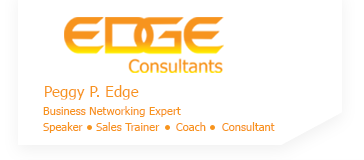Value Proposition: What is your Value Proposition in the Eye of Your Clients?
March 10th, 2014 by admin
What is your Value Proposition in the Eye of your Client?
I asked a client one time, “Kyle, why do you do business with me?” His response was, “Those wonderful Gourmet Chocolate-Chip Brownies that you bring me every Christmas.”
Yes, those Gourmet Chocolate-Chip Brownies are scrumptious. An 80 year old friend of mine bakes these for me each year. Usually around July, several of my clients begin to ask, “When are you going to bring us more brownies?” I have to remind them it isn’t Christmas yet!
Much has been written about Value Proposition and how you must offer so much more than your competition in order to retain business. However, do you know from your client’s prospective the Value Proposition that you provide?
Besides tempting clients with brownies each year, here are several additional tips that you can use to engage clients and prospects to learn more about them and how to better be of service:
-
- Industry – Keep abreast of their industry and discuss trends and happenings with them. Follow them on the internet through all of their social media; subscribe to their industry magazines; join their trade associations.
- Competition – Vet their competition through websites or available trade association information. Discuss what they are doing in comparison to their closest competition.
- Future of Company and Client – Periodically engage them in conversation as to what direction the company as a whole is going but also seek to find out about own their future plans. Are they looking to move up in the organization or on to better opportunities?
- Extras – Be willing to offer products and services that your competition either doesn’t offer or doesn’t want to offer. Over the years, I have provided my clients with many products outside of my core product offerings simply because they said they would buy it if I could provide.
- Partner – Figure out a means of partnering with your clients.
- Resource – Be the “go-to” person when your client needs a warm referral for products or services outside of your wheelhouse.
- Personal Values – How well do you know your client and what is important to them–their values and personal likes/dislikes?
Providing a real value to your clients comes in many forms. Don’t be afraid to simply ask how you can help them grow their business.
Peggy P. Edge © 2014

